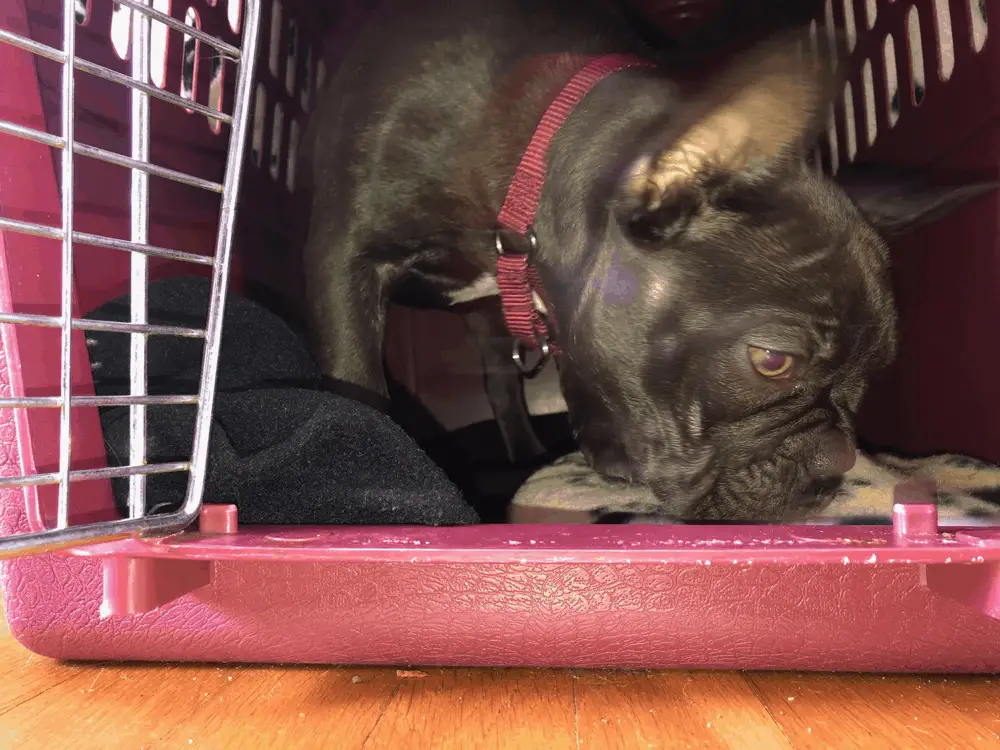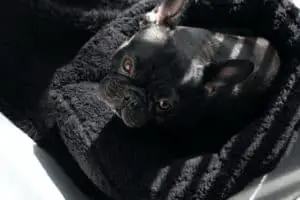French Bulldog colors can vary and I love them all. Frenchies can come in Pied, Brindle, and even red fawn. Pure black and blue are the more rare French Bulldog colors. We will cover both here. My own Frenchie Augie has a brindle color pattern. He is a member of our family and I wouldn’t trade him for anything.
A Little About the History of French Bulldog Colors
French bulldogs were originally bred for companionship and to hunt rats. They have “French” in their name is that they served as companions to lace monikers who traveled to France.
From there, they almost immediately spiked in popularity with the Parisan Elite. The tourists, however, traveled all over the world with them. The pied and brindle colors were the most popular back then.
They are not a super common breed in the U.S. but are often in shelters and rescue organizations.
Basic Colors of French Bulldogs
These colors include the ones that the American Kennel Club accepts and can be in dog shows and accepted as the breed standard. However, this is currently the case for only nine of the breeds.
Pied French Bulldog
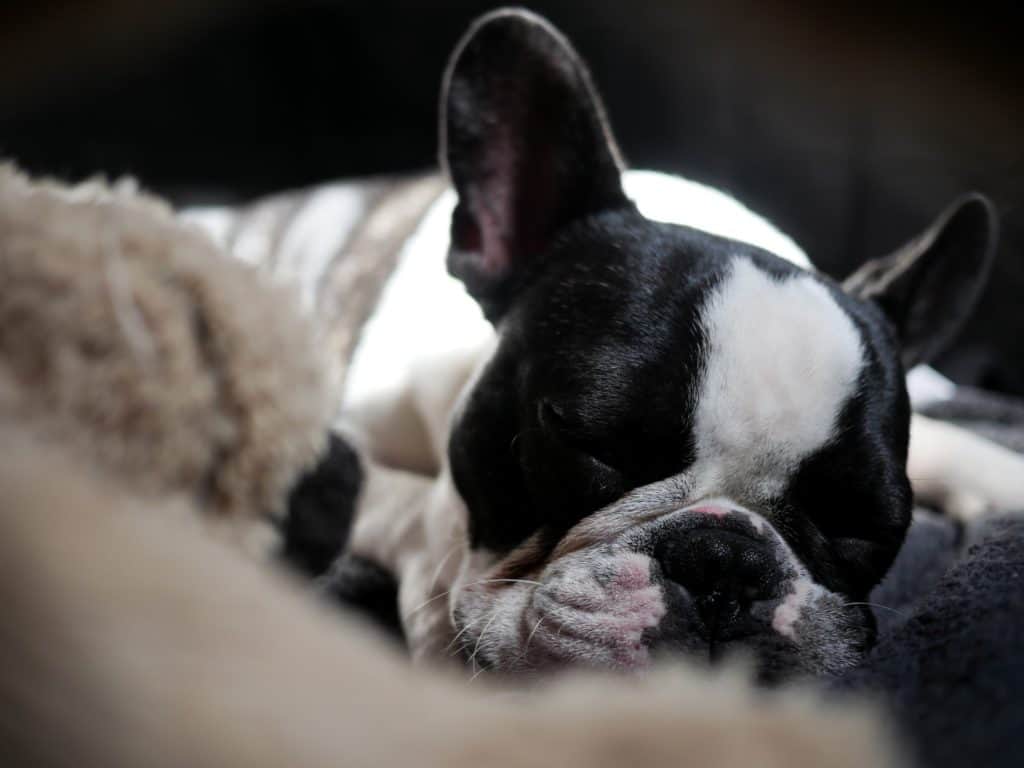
I already briefly mentioned the pied. That’s the most common one for a Frenchie. It is one of the most popular with the American Kennel Club. That means that they can participate in dog shows. It also means that they are often found with reputable breeders and in shelters. A pied French bulldog is a Frenchie whose coat color is mostly white, with clearly marked patches in another, darker color covering parts of their body, head, or in some cases, both.
It is also the most common Frenchie color in the U.K. Sometimes they say “piebald”. Although pied is the technically correct term over there. The black patches can be on the head, body or both. They are the result of both parents being pied or one being pied and the other being genetically recessive. They can also come from parents who are both solid colored but carry the pied gene.
Brindle French Bulldog
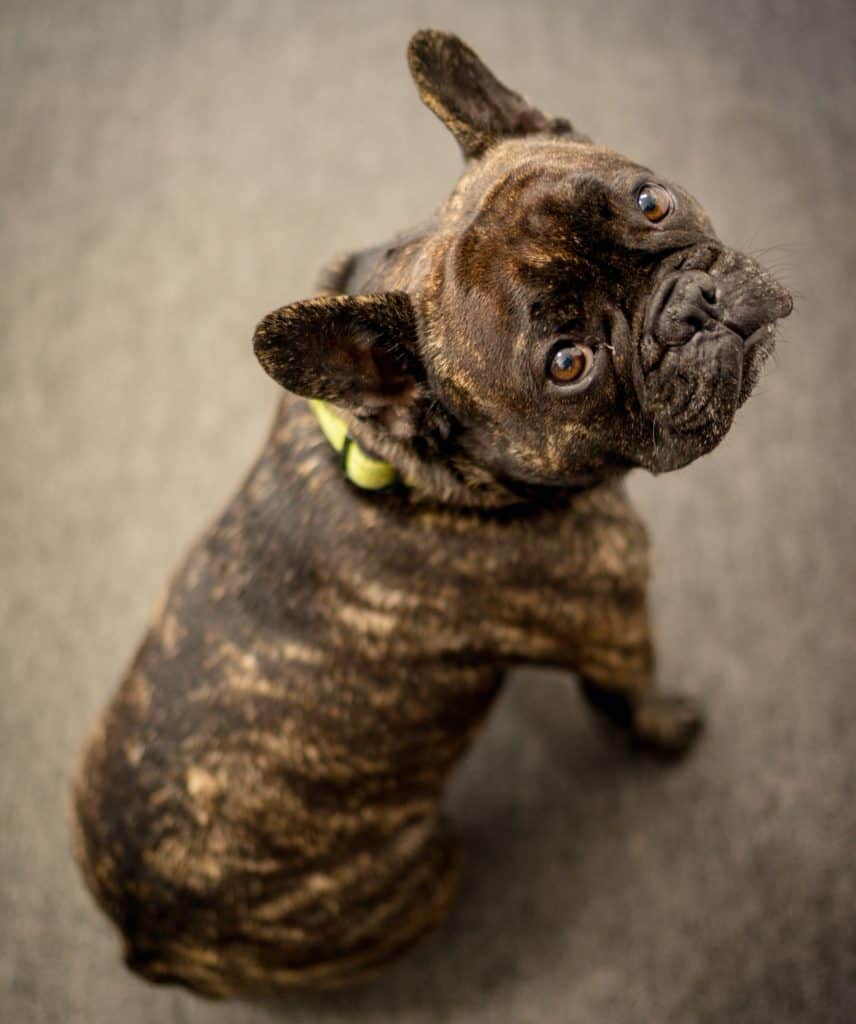
The Brindle is also a very popular French Bulldog color. It is the the brownish or blackish coat mixed with tufts of light color strands. The handsome Frenchie below (my dog Augie) is another example of this color pattern (he’s very light brindle on his sides).

My French Bulldog Augie is a Brindle Frenchie and he’s exceptionally-handsome. 🙂
Fawn French Bulldog Color
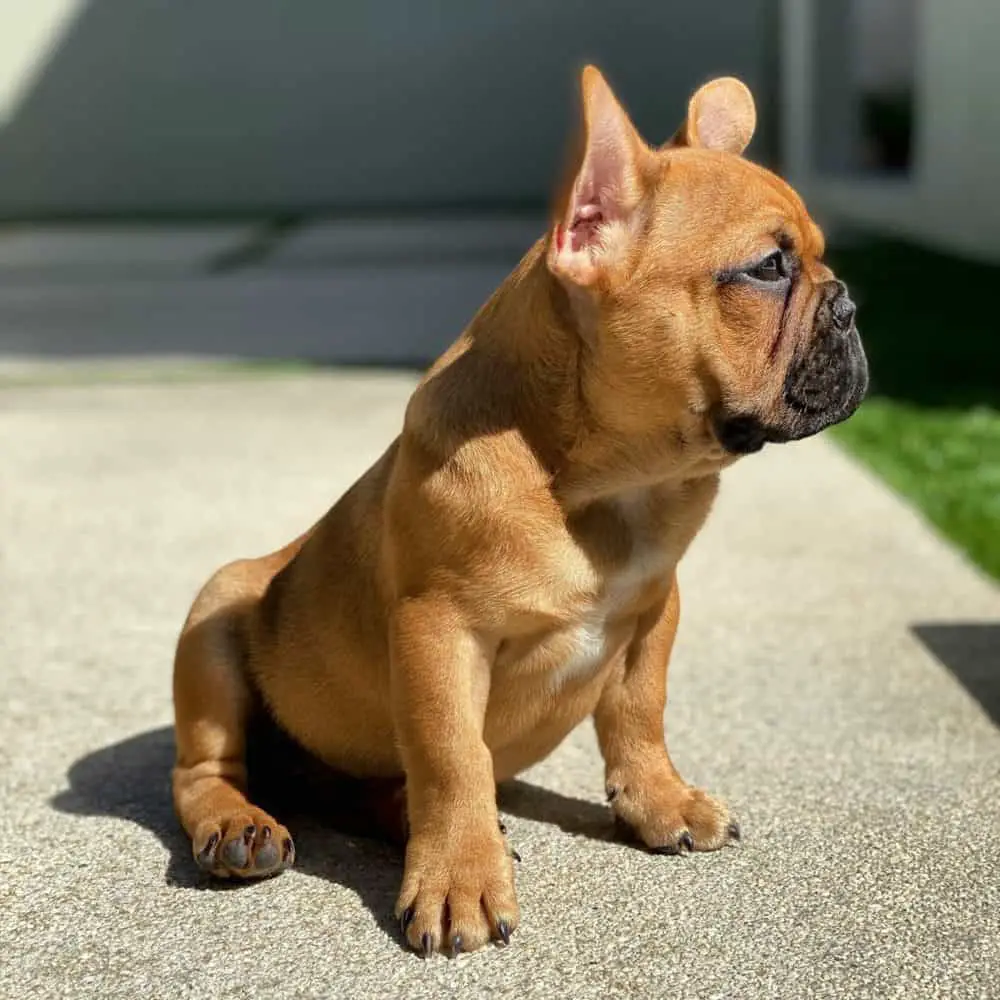
You have probably seen a fawn color at some point and not known that’s what it was. It’s the one that has a coat that is usually light tan with a black muzzle. Fawn French Bulldogs is a lighter tan brown or light beige color Frenchie. A solid fawn coat whose can range from cream, light tan, and even golden tan.
However, sometimes its coat can be on the reddish side and/or it can have streaks of brindle.
White French Bulldog
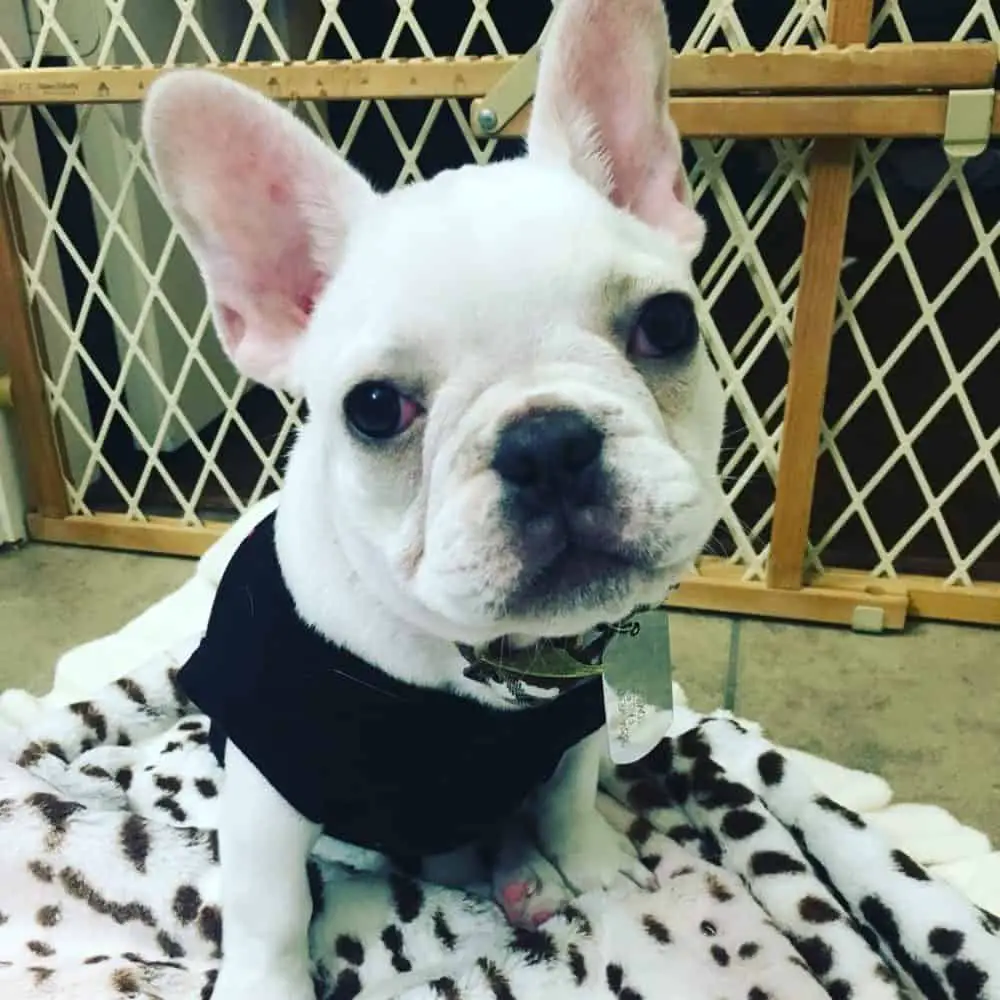
White is another common French Bulldog color and they are quite adorable. They’re usually porcelain white but can be cream-leaning in some cases.
Cream French Bulldog Color
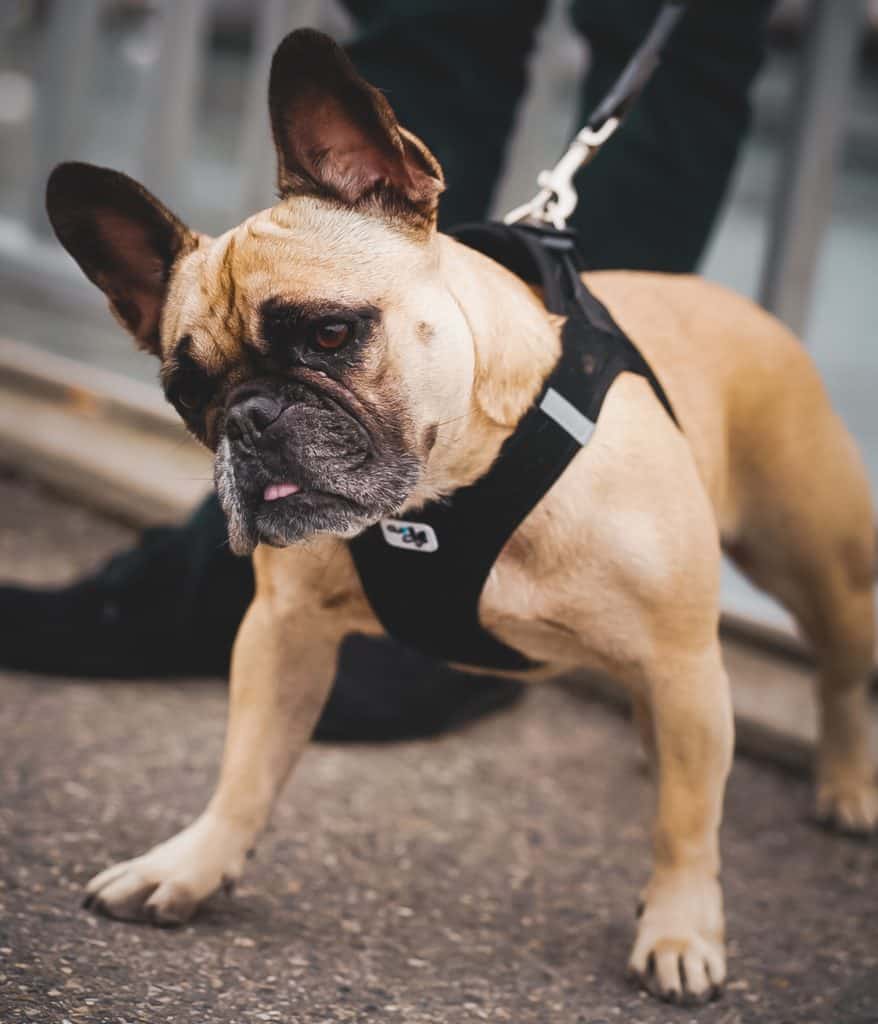
The French Bulldog with a cream color is very similar to the white. However, unlike the pure whites, some have the black muzzle. They have a beautiful coat as well!
Rare French Bulldog Colors
It is often said that rarer breeds tend to have more health issues. However, I am here to tell you to please rest assured that your Frenchie’s color alone does not affect its health. French Bulldogs are prone to certain health conditions of course but different colors aren’t a factor in their health.
Blue French Bulldog

Blue in Frenchies definitely attracts a lot of attention. Let’s face it, that blue Frenchie puppy shown above is absolutely adorable. They’re called that because their coats shine bluish in the light. It’s a little similar to some people’s jet black hair shining that way under intense lighting. However, in Frenchies, the bluish hue is due to a very rare diluted gene. While I find all Frenchies cute these Blue Frenchies are especially attractive so some Frenchie fans!
Cream French Bulldog
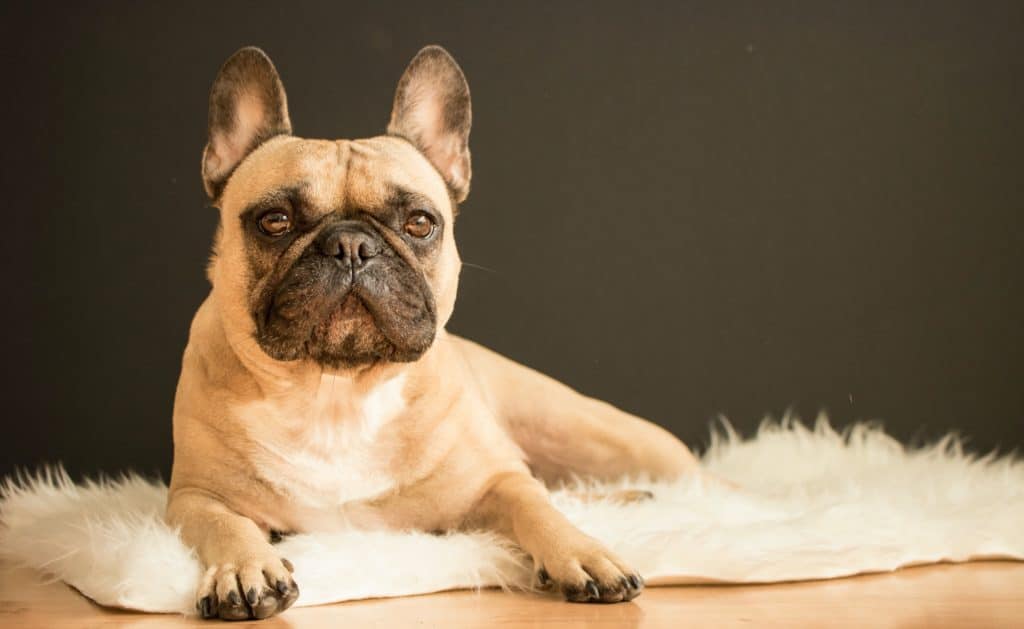
I already mentioned that some from the white group can be cream-colored leaning. However, it is quite rare. The creamies usually have darker eye rims and muzzles.
Chocolate French Bulldog
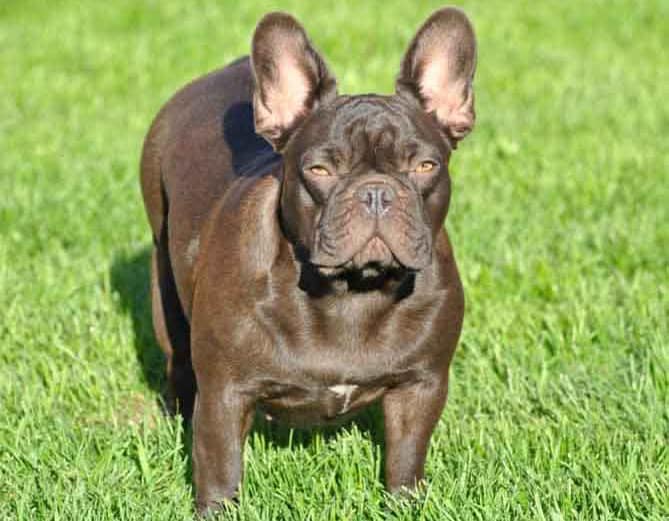
Chocolate Frenchies are the result of both parents having recessive genes. Their eyes are usually green, brown, gold or bright yellow. Their color can be from the lighter to the darker shades. Apparently there is no DNA test available for identifying this gene in French Bulldogs. Two easy tests to ensure your Frenchie is the visual chocolate coloring and a red-eye glow test.
Black and Tan French Bulldog
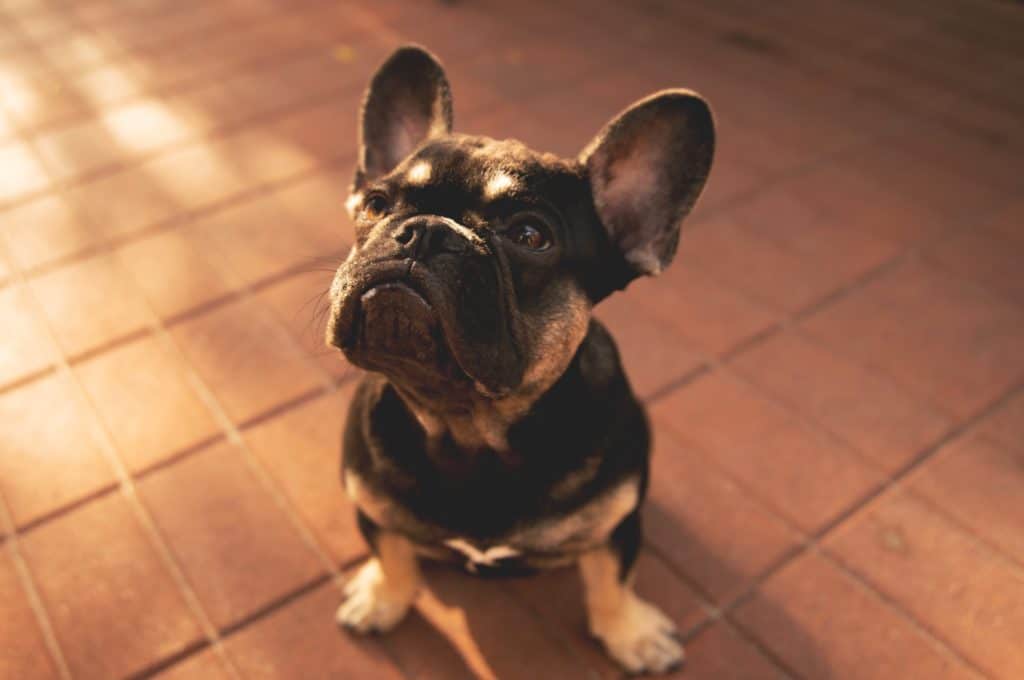
At first glance, black and tans may seem to look similar to the pied. However, a second look shows that they have much more black with a light tan, instead of white. The tan can be dark reddish in some. This color is common in many other dog breeds but more rare for French Bulldogs. It is an incredibly gorgeous look on those Frenchie that do have the markings.
Pure Black French Bulldog
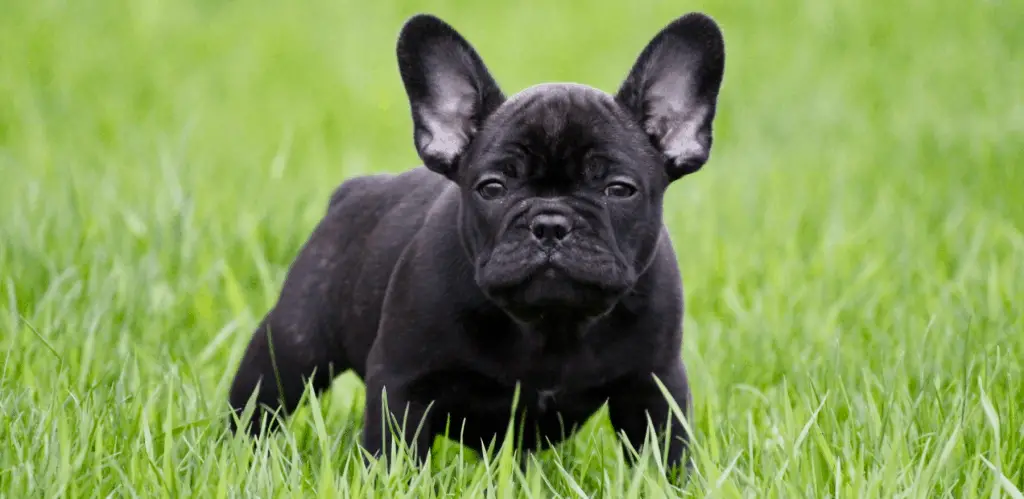
This is one of the most stunning colors on Frenchies. It also seems to emit a certain degree of power. Unfortunately, black in Frenchies is not approved by the American Kennel Club so they can’t be in shows.
Merle French Bulldog
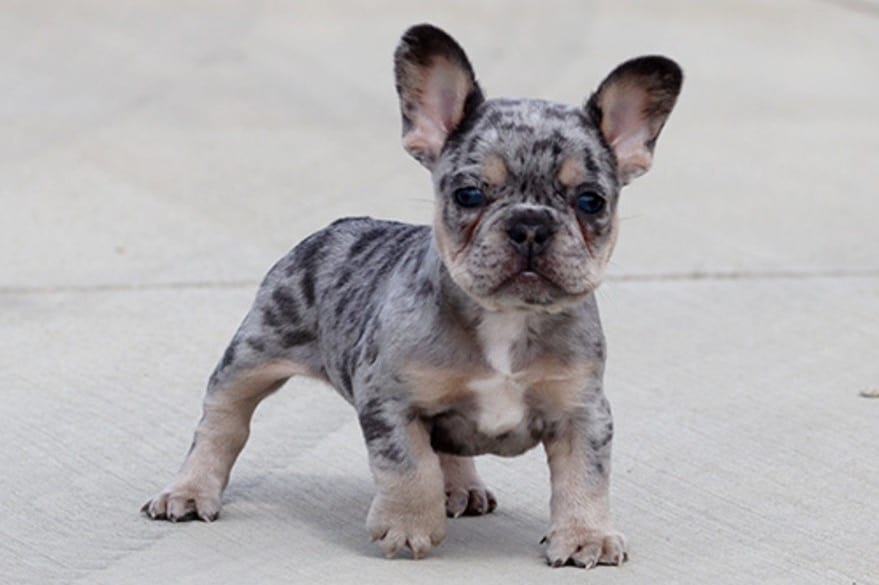
Merles have a most-interesting color mix. It is usually a mix of cream, white or fawn with black or brown mixes. It’s not unusual for them to have at least a little Chihuahua blood (thus not fully pure bred French Bulldogs). Frenchies often crossbred with them in the past. Merle is actually a dominant gene so they should breed with other dominants. One with a single color coat would be most ideal.
Lilac French Bulldog

Lilacs are a very beautiful French Bulldog color. They can look like a very light chocolate or a light blue. Their eyes are usually yellow, light brown or blue. Lilac French Bulldogs are a recessive gene so they are often more expensive. They look very similar to the blues when they’re newborn.
Blue and Tan French Bulldog
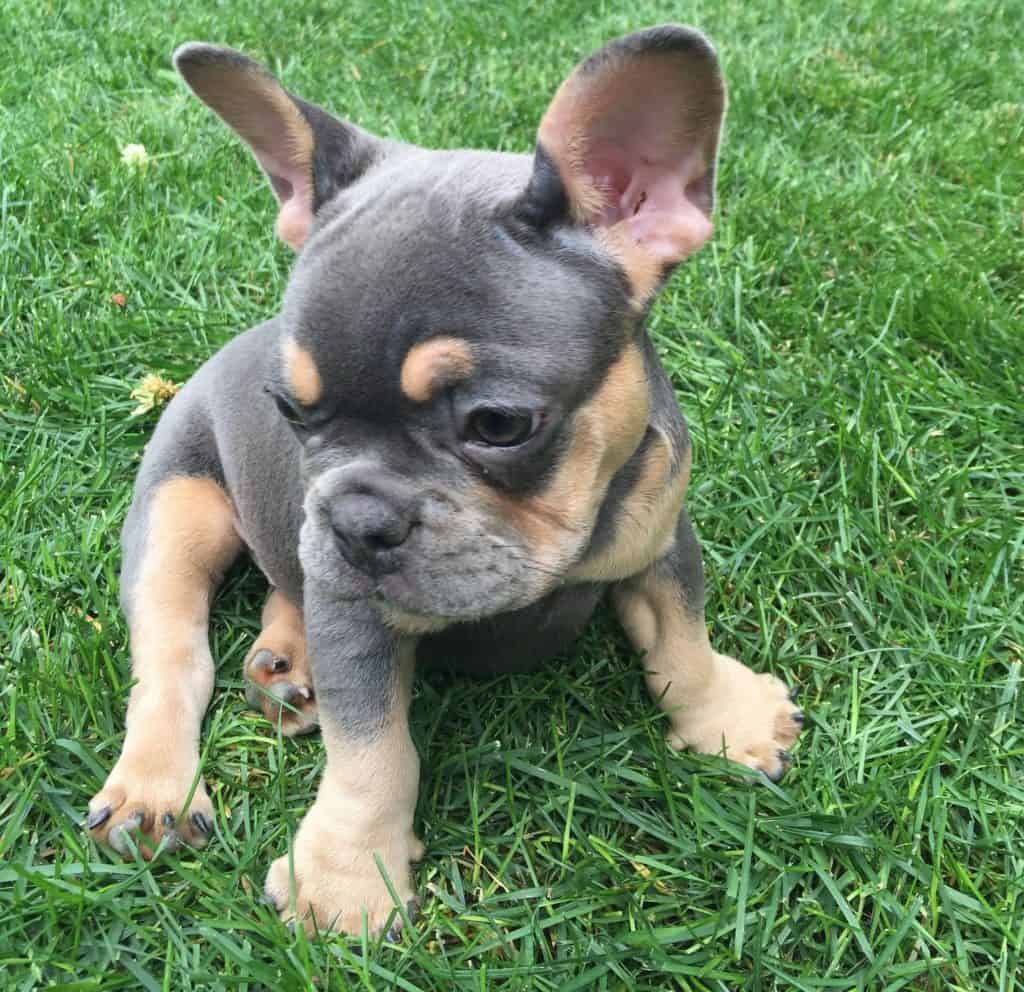
The blue and tans look very similar to the black and tans. Only their lighter color, whether it’s fawn, cream or white, is dominant and the blue is a diluted version of black. The lighter color almost always shows above their eyes and around their muzzles.
Isabella French Bulldog
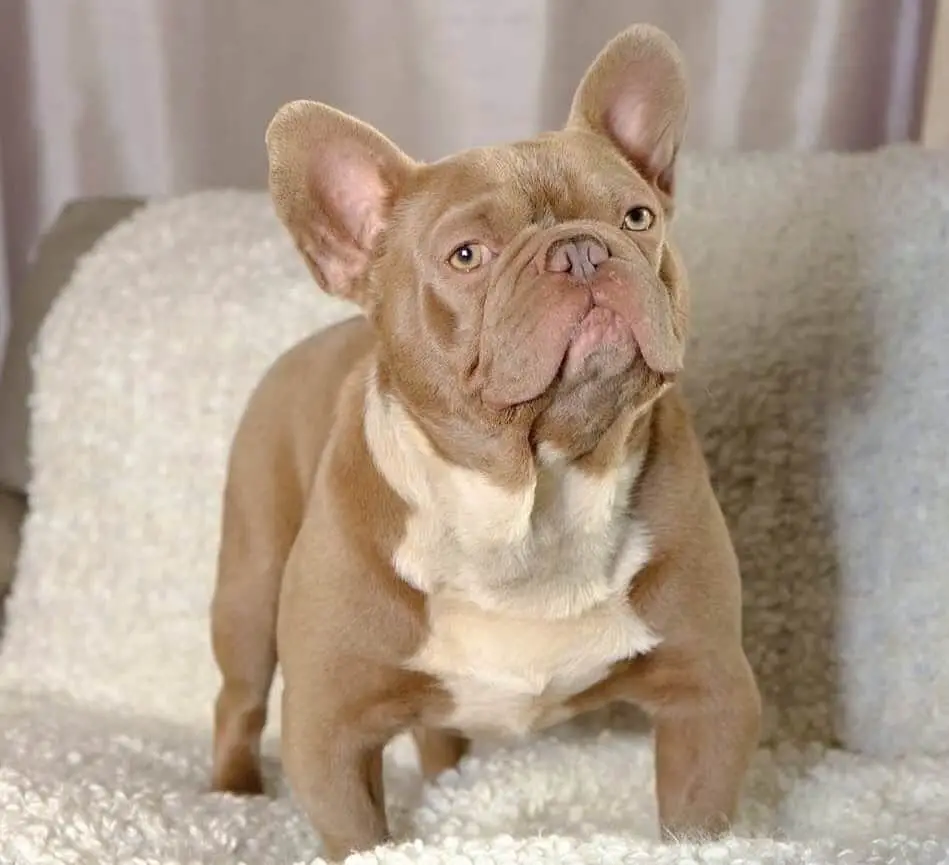
An isabella’s chest is usually white or cream colored. Otherwise, a darker marking, such as light brown, dominates their fur. Their eyes are usually a lighter color such as light blue, yellow, green or grey. They also usually have pink skin around their muzzles. As a result, isabella owners need to pay very careful attention to any signs of sun damage in that area.
Sable French Bulldog
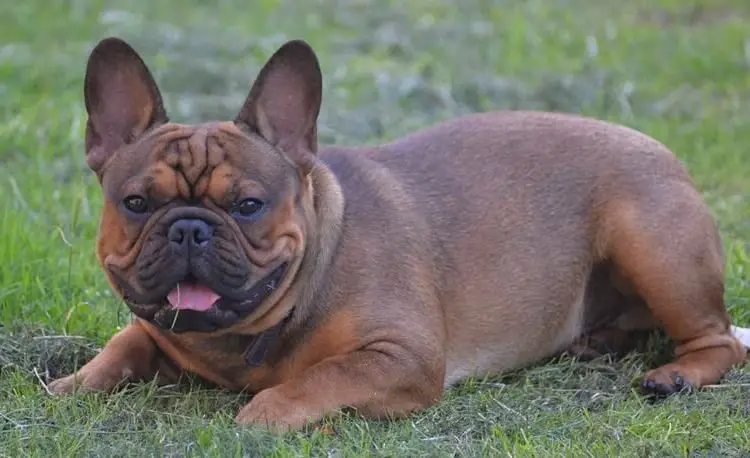
Sables have a very highly unusual coloring of reddish with fawn. They can also be of light tan or darker variations. The tip of their hair is often peppered with black.
Fawn French Bulldog Varieties
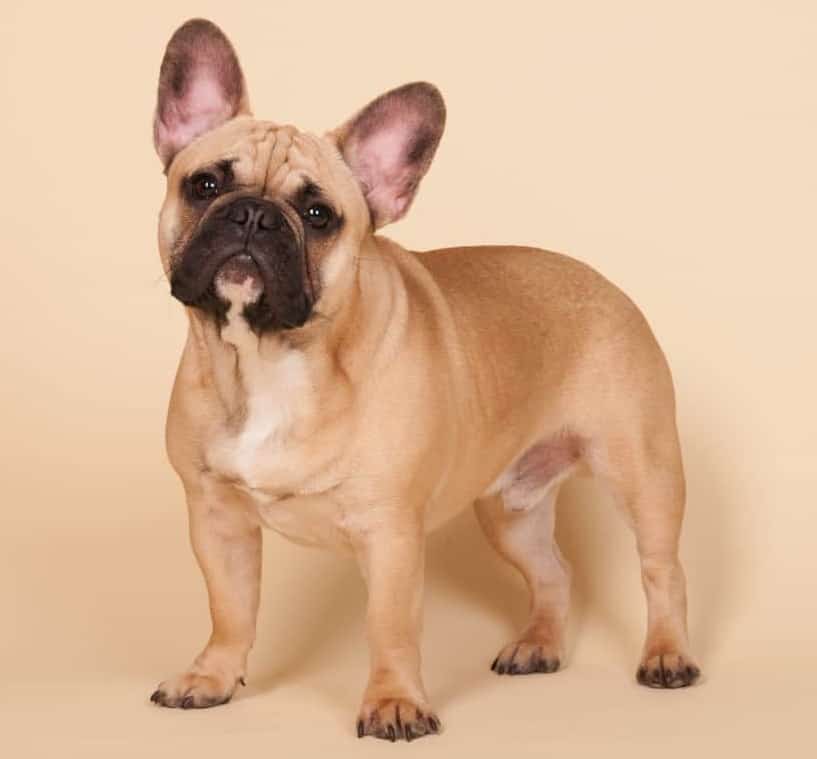
Yes, there are some variations in the fawn colorings. These range from light golden tan. What they all have in common, however, is the black mask-like color around their muzzles.
Various Patterns of Colors of French Bulldogs
Frenchies come in various other patterns than the ones mentioned above. It’s part of what makes them so unique and adorable. Believe it or not, the American Kennel Club accepts both listed below. Even they are very appreciative of such uniqueness. However, they do warn that since they are so rare, finding a Frenchie of either of the below colors can take awhile.
Blue Brindle
Blue brindle occurs when hues of blue slightly masks the chocolate color. The blue is usually found along the back and muzzle areas.
Blue Fawn
Blue fawn, like the blue brindle, occurs when the blue hues mask the cream, tan or reddish coat.
What Is The Rarest Color Of French Bulldog?
As of 2019, the isabella stands as the rarest breed. The reason is that it contains the genotype dd. It’s called the dilution gene, which stands on the platform of dilute d and D non-dilute. As its name suggests, the dilution gene lightens colors, including red and black. If one parent carries the dd allele and he or she mates with a Dd or DD partner, they have exactly half of a chance of producing rare-colored puppies. Chocolate colored carriers have the best chance of having an isabella.
Again, it’s often claimed that the rarer colors are more likely to have health problems. Again, however, it is not the color alone that makes for the health issues. Instead, it’s due to having a faulty gene, such as having d1 instead of dd.
Color Dilution Alopecia
One common condition of dogs with the d1 gene is color dilution alopecia (or CDA).It’s the thinning and loss of hair in patches. It often leaves dandruff-like skin, which can be itchy. At worst, their skin develops bacterial infections. It occurs due to abnormalities in the hair follicles. The follicles start to self-destruct making it almost impossible for new hair to grow.
This is rare in Frenchies but if yours has it, it’s pretty easy to manage. Be sure to consult with your veterinarian about the best course of treatment. Most likely, it will be a shampoo, rinse or ointment. At worst, your Frenchie could develop a severe skin infection. In that case, your veterinarian will likely prescribe an oral antibiotic along with diet recommendations.
Unfortunately, CDA is currently not curable. As a result, it is recommended that they not breed. CDA is vicariously inherent. As a result, breeding any of their littermates is not recommended. In fact, it is recommended to fix both of the parents once at least one of their puppies is born with the condition.
Summary – French Bulldog Colors
Exploring dog colors is fun and a way to explore your preferences. If you’re a Frenchie fanatic, like me, you probably know your preferences by now. Remember that if you’re going for show, you’re currently limited to nine breeds.
However, I’m going to assume that you’re more like me and that you just favor Frenchies. I agree that some are prettier than others. However, regardless of their color, they’re fun to have around and make loving companions. They’re also the right size for an apartment.
PS – Ever heard of the color variation known as the Zebra French Bulldog.


